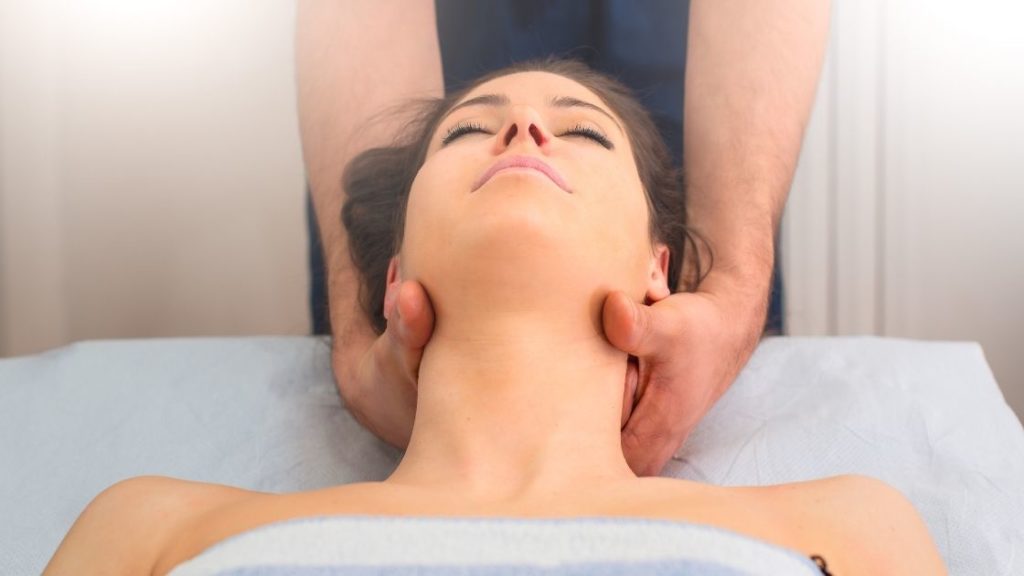How Can Craniosacral Therapy Help You?

Let’s talk about this magnificent healing modality called craniosacral therapy. Maybe you’ve heard of it or maybe this is the first time it has come to your awareness. Either way I hope the following information answers some questions and provides insights into this seemingly mysterious therapy.
What is Craniosacral Therapy?
Starting with the most pressing question; what the heck is craniosacral therapy anyway? CranioSacral Therapy is a non invasive therapy that assesses, modifies and corrects restrictions in the craniosacaral system, to improve wellness and enhance the body’s ability to self regulate.
Now I know what you’re thinking…Craniosacral system?? Never heard of it! Although it may not be as well known as other body systems it is just as important for your health and ability to function properly. The craniosacral system is a physiological system that is responsible for the production, circulation and re-absorption of cerebrospinal fluid (CSF). This fluid is what keeps your brain from hitting the side of your skull and it flows all the way down your spine and back up again. This is why it is called cranial like cranium commonly known as your head and sacral like sacrum commonly known as your tail bone. Not only does the CSF protect your brain but it also helps maintain the environment for your nervous system to develop, function and thrive. The system itself consists of the ventricular system that produces the cerebrospinal fluid, Dural membranes surrounding the spinal cord and the boney and facial attachments of membranes. Welcome to anatomy folks! Our bodies are powerful, intricate and complex!
Now that we have a brief understanding of the system we are working in when receiving craniosacaral therapy let us look at the healing modality itself. The practitioner is observing and feeling for areas of restriction in what we call the craniosacral rhythm. This rhythm is the movement of the bones and body tissues in response to the flow of CSF that I mentioned earlier. When flowing at optimal functionality we tend to have a fluid movement of CSF that falls into a slow 1-2-3, 3-2-1 pattern. So your therapist will be checking in with the flow of the CSF and is aiming to assist your body to achieve greater balance aka good ol’ homeostasis! By assisting the body in this way, we are allowing the body to kick start its own healing and self regulate more easily and efficiently. Craniosacral therapy primarily uses light touch, time, intention and energy to be effective in its application.
What does this look and feel like for you, as the client? You will experience gentle holds along the spine, hips and head with a very light pressure. Ideally about the weight of a nickel! The therapist will stay in that hold for anywhere between 2-5 minutes or sometimes longer depending on the length of your session and how your body is responding to a specific hold. You may feel relaxation, tingles, warmth or sensations of energy movement. Some people fall asleep, while others may have involuntary muscle twitches or emotional releases. Some people do not feel much at all but often still report feeling relief or greater relaxation post treatment.
This modality can be done completely on its own or integrated into a traditional massage as long as your massage therapist has trained in the modality. If you receive a full Cranioscaral therapy session you can remain fully clothed for your treatment! However, it is necessary that you are not wearing any restrictive or tight clothing because it can compromise the fluidity of the CSF. If you were looking for an excuse to wear your favorite sweatpants out and about here it is!
What Are the Benefits of Craniosacral Therapy?
The benefits of receiving Craniosacral therapy are quite vast! According to The Upledger Institute (one of the leading training facilities) some of the health conditions it can greatly assist with are:
- headaches and migraines
- chronic fatigue
- chronic neck pain and back pain
- stress and tension related issues
- fibromyalgia and other connective tissue disorders
- TMJ
- scoliosis
- concussions and
- emotional difficulties
- PTSD
- AND MORE!
If you feel called to try this healing therapy for yourself, please do! It was so impactful for me, that I decided to take a continuing education course and learn how to provide it for my clients. And we are proud to offer it with one of skilled and trained therapists here at Moyer Total Wellness!

Samantha Sprinkle
Author, Licensed Massage Therapist
Samantha graduated from the Denver School of Massage Therapy in 2011 to become a full time LMT. She has been trained in many modalities and enjoys providing a variety of techniques within each of her sessions. Samantha specializes in Swedish massage, deep tissue, trigger point therapy, sports massage, hot stone massage, and prenatal while also incorporating reiki, reflexology, and cranial sacral therapy into her sessions.
Resources
“Discover CranioSacral Therapy.” Www.upledger.com, www.upledger.com/therapies/index.php. Accessed 3 Feb. 2022.
Upledger, John E. CranioSacral Therapy 1 Study Guide. Upledger Productions, 18 May 2016.
Photo Credit
Canva by Immagini di Michelangelo Oprandi
